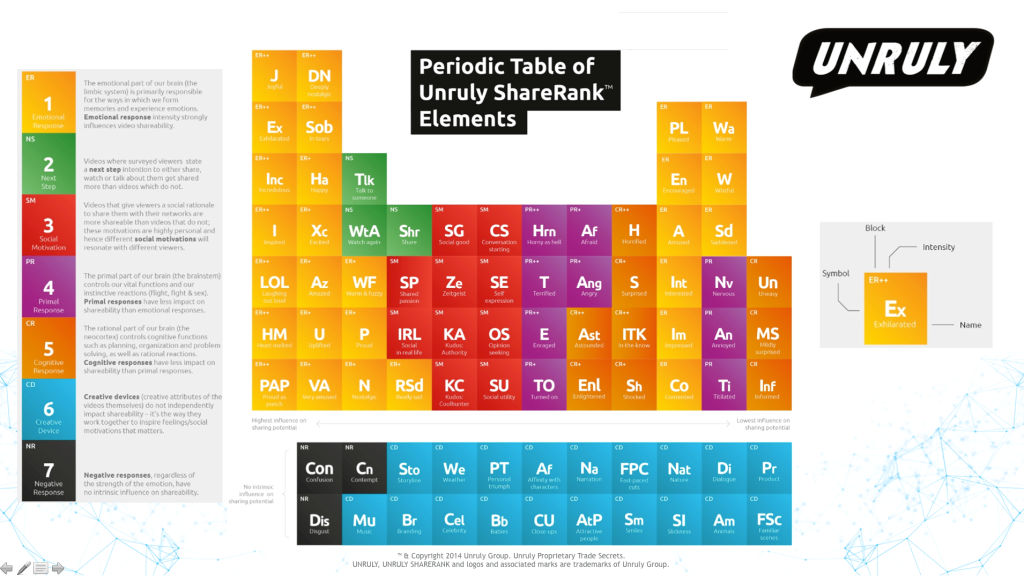“What makes video go viral in emerging markets?” – Cat Jones at #qznextbillion
I’m spending the day at Quartz’s event “The Next Billion”. Here are my notes from the talk by Cat Jones, looking at viral video.
“What makes video go viral in emerging markets?” – Cat Jones
Cat Jones is Product Director at Unruly, a programmatic platform for video ads.
Cat highlighted the growth of sharing has been enormous in the last ten years, saying that in 2006 the most shared branded video they measured had 750,000 views. In 2014 the most shared video had 4 million views. Unruly have been tracking viral videos since 2006, and has data on 1.3 trillion video views. Big old database there.
Cat explained that the more academics have researched the data Unruly collect to get to the underlying drivers of sharing the more they realised “It’s not just a black swan effect – you can actually predict how a video is going to be shared”
Unruly created their periodic table of sharing, which is, to be honest, one of those crappy infographic type things that I hate, but is one way of presenting the different factors they say goes into sharing.

If you can make someone feel incredulous or “laugh out loud” these are strong emotional drivers of sharing.
One key driver is psychological response – to make someone fee something strongly.
But a second key factor is one people often forget about – social motivations.
You have to give someone a reason to share, and it has to be consistent with their personal brand.
Quartz’s event is all about looking at the behaviour of the next billion people to get connected to the net. Cat puts them into two categories – people with a good connection speed who will be consuming video. And people who don’t have a good connection speed but who might be good producers of video.
Psychological responses that drive sharing are different in different global markets – but happiness is usually right up there, at #1 or #2 in places as far apart as Brazil, the UK, Germany, India and South East Asia.
Where you see cultural differences is in the “social motivation” – in the States shared passion is key, in Germany it is conversation starting. However in the South East Asia market, Cat said “opinion seeking” and “social utility” are the biggest drivers.
If you test the same video across all these markets you see different motivations for sharing.
Cat used the Google Search: Reunion video as an example. Tested in the UK it was found to make people “Happy” and “Inspired” and “Warm & Fuzzy”. In India “Warm & Fuzzy” was a much stronger “Joy”. The Indian market wanted to share the video because it did a “social good” – in the UK the sharing motivation was more around “shared passion”
Cat’s hypothesis is that with 300 hours of video uploaded to YouTube every minute, the content created “has to be very impactful to cut through.” But emerging markets could be a massive window of opportunity. The rates of engagement she said are way higher in these places. Viewers in “The West” are more selective about what they share, tending to share to family or select groups of friends. In emerging markets people are much more likely to broadcast their sharing to their entire network.
Read all of my posts about Quartz’s “The Next Billion”:
“What makes video go viral in emerging markets?” – Cat Jones
“Providing free ad-supported mobile internet access for the next billion” – Nathan Eagle
“Inspiring computer hardware for young people in the developing world” – Yonatan Raz-Fridman
“Your next ride – Uber in emerging markets” – Jambu Palaniappan
“The VPN effect and the web’s missing billion” – Jason Mander